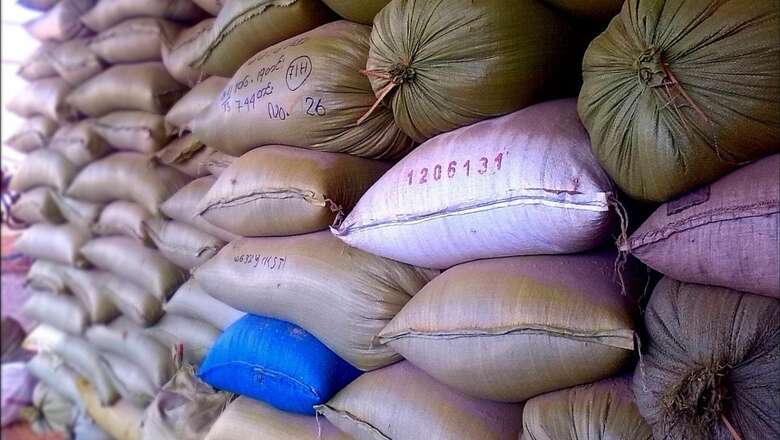
views
The Ministry of Cooperation was formed in 2021, just as India was coming out of the deadly second wave of the Covid-19 pandemic. Amidst the various structural reforms that the Modi government was taking towards the idea of Atmanirbhar Bharat, the formation of a new ministry on cooperatives did not make a big splash. However, the Ministry of Cooperation has taken some compelling and far-reaching steps since its formation.
There are two key issues this ministry is trying to address.
First, the Indian rural entrepreneurs and the workforce – the principal focus of this ministry – suffer from an economies of scale problem. Farmers as well as farm labourers have limited-sized opportunities. Cooperatives help this economic output aggregate in a way that opens up bigger market opportunities and creates strong vertical capabilities.
Second, the traditional single-domain vertical aggregation model of running cooperatives is now being supplemented with horizontal expansion. The cooperatives now have access to multiple sectors, which were otherwise meant for organised industry but did not always attract sufficient investments at the point of aggregation in the rural economy.
Underpinning these objectives of deeper and wider penetration of the cooperatives model is the professionalisation as well as automation of these cooperatives through innovative use of technologies and modern-day management practices. This effort is being spearheaded by the ministry, such as through the computerisation of the Registrar of Cooperative Societies and Agriculture and Rural Development Banks.
Of these three pillars of cooperative transformation – create deep domain strength, open new business opportunities and undertake a technology-led operational transformation – the horizontal expansion objective merits a deeper dive. This theme seeks to drive high-ambition change to the Indian rural economy, by empowering primary credit societies to expand in new sectors. A critical intervention in this direction was made in May 2023, when the Union cabinet approved the “world’s largest grain storage plan in the cooperative sector”.
Grain storage in India traditionally has several issues. Since the Green Revolution, the Central government has been spearheading minimum price setting and procurement support for 23 different crops. Hence, the market-signalling is for the Central government to own the procurement and hence storage function. Given the Agriculture Produce Market Committee (APMC)-led marketing structure for crops, it may not be feasible for private entities to look at storing agricultural produce in many cases, given operational and legal complexities.
Creating storage infrastructure close to farmgate also requires big capital expenditure and land acquisition. Investors may baulk at making such investments that demand upfront cash flow in a low-margin business subject to negative externalities like weather events. However, most farmers – even those who want to store their produce to benefit from future price gains – may not have the capacity to pay for such storage. This ‘chicken and egg’ problem deters new investments – not just private but even government investment.
The Food Corporation of India has been the mainstay of India’s grain storage plans. However, its facilities are outdated and its capacities are limited, leading to severe annual wastage of food grains. India produces upward of 300 million tonnes of foodgrains every year, but the available storage capacity at 47 per cent of the production is less than 150 million tonnes. Despite being the third-largest foodgrain producer, India suffers from vagaries of price fluctuations and supply-demand gaps, stressed further in poor-monsoon years.
Since India also maintains public food-stocks to cater to the National Food Security Act and programs like Pradhan Mantri Gareeb Kalyan Anna Yojana, foodgrains storage is not just essential but is effectively a statutory requirement. In fact, due to poor storage infrastructure, vagaries of the monsoon and huge wastages of procured foodgrains that take place each year, India is often forced to store up to three times the quantity of grains required to run these programs.
This is where the Ministry of Cooperation has stepped in. It is seeking to empower cooperative groups run by the farmers themselves to run low-cost, high-trust, highly localised and decentralised foodgrain storage businesses. The idea is to establish at least one warehouse of 2000 tonnes capacity at the block level. In total, about 70 million tonnes of warehousing capacities will be targeted. The ministry will help link the existing storage facilities to primary agriculture credit cooperative societies (PACS) through the Agriculture Infrastructure Fund (AIF) and Agricultural Marketing Infrastructure (AMI) of the Ministry of Agriculture and Farmers’ Welfare. PACS can also seek assistance under AIF for modernisation and upgradation of their warehouses and other infrastructure. All loans sanctioned will have an interest subvention component to make the business proposition attractive.
Farmers can sell their crop to the PACS and get advance payment of 70 per cent at minimum support price (MSP) and the balance amount when the PACS sells the food grains in the market. Alternatively, farmers can store their produce with the PACS and avail of bridge finance for the next cycle of crop and sell the produce at a time of their choice. If they so choose, the farmers can also sell their whole crop to PACS at MSP.
The decentralisation of the storage will also make the foodgrain distribution more efficient with local access for the public distribution system as well as the market value chain participants. In fact, PACS can themselves act as fair-price shops. This grand design brings together the various government schemes across the ministries and links them through the Ministry of Cooperation. This is a critical effort by the Modi government to apply a “whole of government” approach to bring prosperity to the rural economy and food security to the country as a whole.
Currently, consumers’ and farmers’ interests tend to be placed on a hyperbolic curve – only one of the two can be maximised. However, bringing in large-scale storage intermediation can make the agriculture sector prosperous and professional without worrying about periodic food price-led consumer inflation. The ambition and the vision of this program may explain why Prime Minister Narendra Modi chose Home Minister Amit Shah to hold charge of this ministry. A grand transformation is underway – it holds the promise of huge upside.
Nimish Joshi is Director, Smahi Foundation of Policy and Research. Views expressed in the above piece are personal and solely those of the author. They do not necessarily reflect News18’s views.















Comments
0 comment